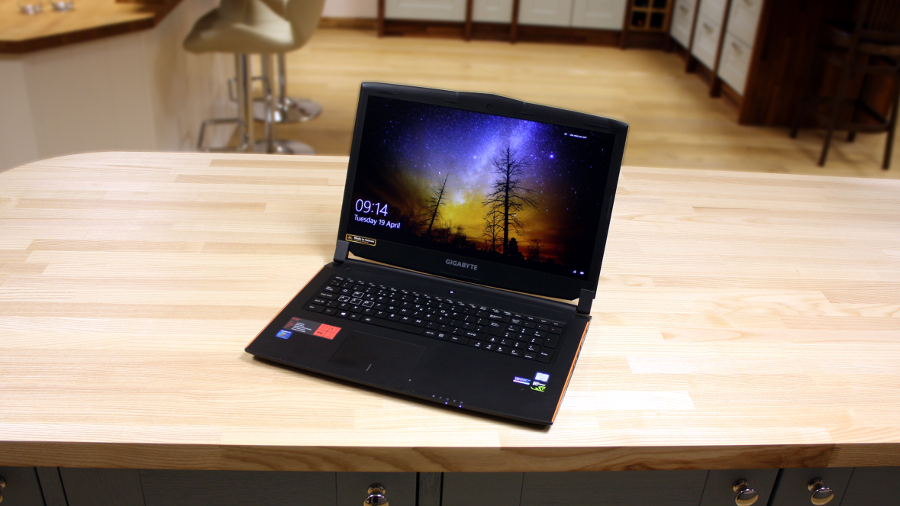Why you can trust TechRadar
The Gigabyte P57W is currently only available as a single specification. It's not like this is a huge problem though, as little about it is lacking.
Spec sheet
- Processor: 2.6GHz Intel Core i7-6700HQ (quad-core, 6MB cache, 3.5GHz with Turbo Boost)
- GPU: Nvidia Geforce GTX 970M (3GB GDDR5); Intel HD Graphics 530
- RAM: 16GB DDR4
- Screen: 17.3-inch full HD 1,920 x 1,080 IPS LCD
- Storage: 256GB M.2 SSD, 1TB HDD (7,200 rpm)
- Optical drive: Super Multi DVD-RW
- Ports: 3 x USB 3.0, 1 x Type-C USB 3.1, HDMI 2.0, Mini DP, VGA, RJ45, microphone-in, analogue/optical headphone-out, SD card reader
- Connectivity: 802.11ac Wi-Fi, Bluetooth 4.1
- Camera: HD webcam
- Audio: 2 x 2 watt speakers, microphone, Dolby Digital Plus Home Theatre certified
- Battery: Li-ion 6-cell 6830mAh (75.81Wh)
- Weight: 2.9kg (6.39 pounds)
The specs above may not place the P57W in the top tier of portable gaming powerhouses, but can be had for just £1199 or $1,399 (about AU$2205) – at least £200 cheaper than the very similarly configured Acer Predator 17.
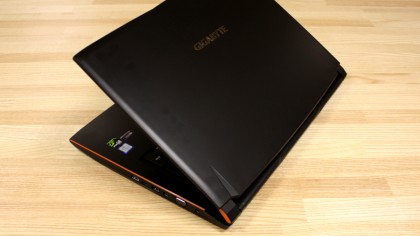
Though the CPU and GPU options cannot be upgraded, RAM can be beefed up to 32GB and the DVD drive can be swapped out for an additional 2.5-inch drive by using the included adaptor – a handy extra, though I would have preferred a little more battery capacity instead.
There's seemingly more than enough power to breeze through any game or application currently available, with games able to make full use of the 1080p screen without even a judder. The 256GB SSD could get filled up pretty quickly with games and other media, were it not for the additional 1TB HDD and ability to add in another in place of optical storage.
Performance
Deeper pockets might insist on a portable gaming machine packing a GTX 980M, but the GTX 970M at the heart of the Gigabyte P57W's gaming grunt is more than a match for any game running at 1080p. There's 3GB of video memory available, which allows most games to be turned up to high settings (or better).
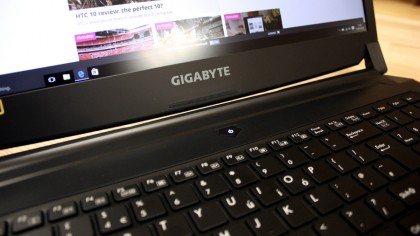
That graphical power combined with Intel's widely-used Core i7-6700HQ processor and 16GB of fast DDR4 RAM means that the P57W is more powerful than many desktop PCs, making it a prime candidate for taking to a multiplayer gaming event.
Of course, if you would rather keep the machine tethered to the confines of your home, it'll do anything else you might ask of it when you aren't getting killed in Dark Souls 3 for the thousandth time – whether that's video editing, watching a film, or even boring old office tasks.
Windows 10 felt particularly swift – no matter how many Chrome tabs I had open, it carried on without breaking a sweat. Boot times were particularly impressive too, thanks to the SSD boot drive.
Benchmarks
Here's how the Gigabyte P57W performed in our suite of benchmark tests:
- 3DMark: Cloudgate: 21,724; Sky Diver: 19,787; Fire Strike: 6,657
- Cinebench: CPU: 674 points; Single Core CPU: 145 points; Graphics: 80 fps
- PCMark 8 Home Test: 3,803
- PCMark 8 Battery Life: 3 hours 3 minutes
- Middle Earth: Shadow of Mordor: 1080p, Ultra: 53 fps; 1080p, Low: 126 fps
- Metro: Last Light: (1080p, Ultra): 33 fps; (1080p, Low): 108 fps
- GTA V: (1080p, Ultra): 17fps; (1080p, Low): 102 fps
It's little surprise that the P57W reported some respectable scores across our range of benchmarks. Its closest rival - the identically specified Asus ROG G752VT - was pipped to the post in almost every test, but only by a couple of points here and there. Overall the benchmark scores were very impressive, and not far off the higher 3DMark scores achieved by the GTX980M powered Acer Predator 17.
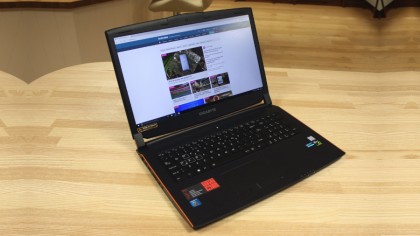
With everything on ultra, Middle Earth: Shadow of Mordor and Metro: Last Light were consistently smooth, and frame rates were a considerable jump up from Gigabyte's GTX 965M-powered P55K, and double that achieved by the Dell Inspiron 15 7000, which features a GTX960M GPU.
Battery life
I wasn't expecting anything revolutionary when it came to battery life, but the Gigabyte P57W surprised me by delivering a reasonable runtime of just over three hours in PC Mark 8, while Techradar's own HD video test saw it last for nearly five hours with screen brightness at 50%.
Gaming with the speakers on and screen brightness turned up, I found myself reaching for the power cable after a couple of hours of gaming – what you'd expect from a machine that tips the balance in favour of performance over anything else.
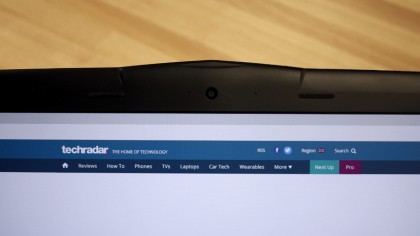
Multimedia
Unlike some of the slightly more expensive 17-inch gaming laptops around, there isn't a subwoofer onboard, though the twin 2W speakers do just about enough to keep you firmly engrossed in games or films. Dolby's Digital Plus Home Theatre software helps to improve surround sound effects in games, but there isn't the weight to the sound that we've experienced from other larger laptops we've used. If you decide to have a dabble in the settings, a customizable equaliser allows you to adjust the audio to your own tastes, toggle virtual surround and much more.
The 17.3-inch 1080p IPS display has accurate colour, wide viewing angles and an anti-glare coating that gives the screen a matte finish and helps minimise reflections. While it is a perfectly good screen, it's surprising that there isn't an option for ultra-high-resolution 2K or 4K panels.
